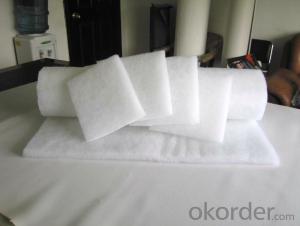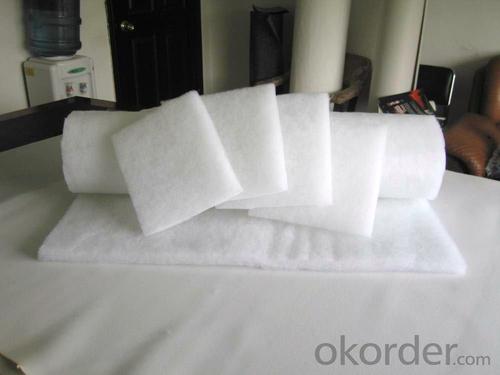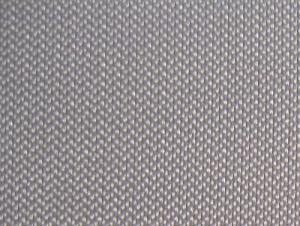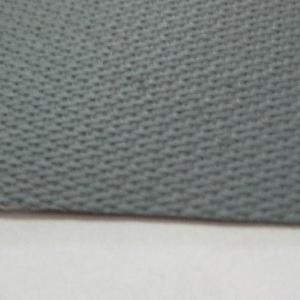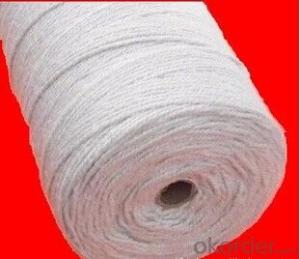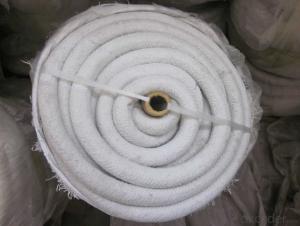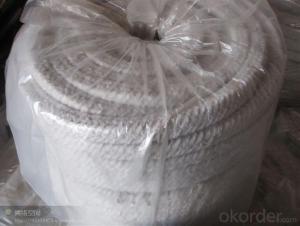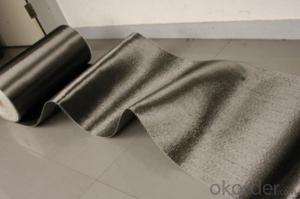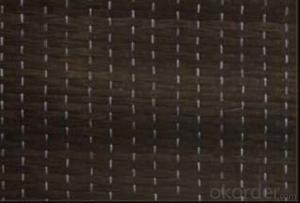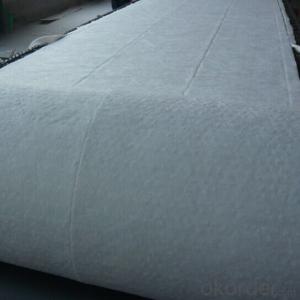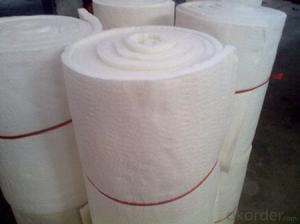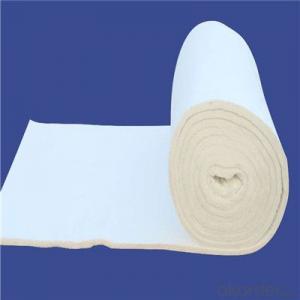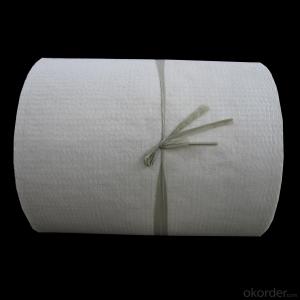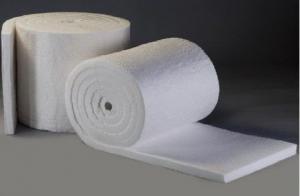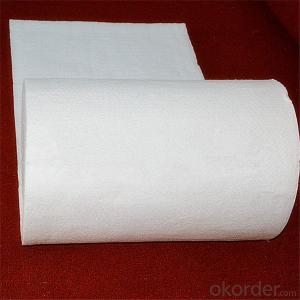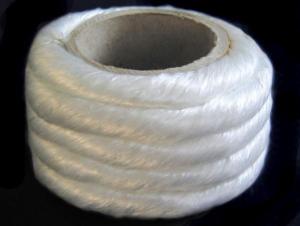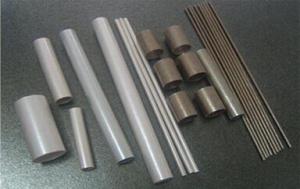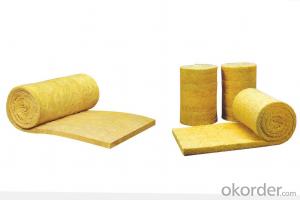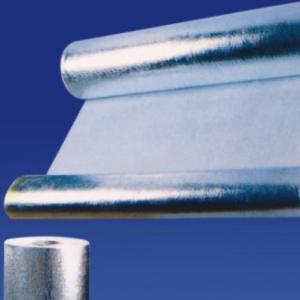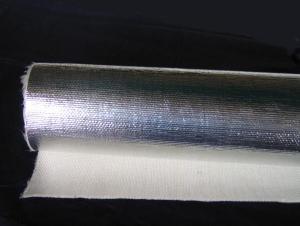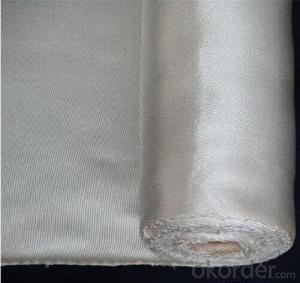Glass Fiber Textiles - Pure White Ceramic Fiber Blanket with Low Price
- Loading Port:
- Shanghai
- Payment Terms:
- TT OR LC
- Min Order Qty:
- 1 m.t.
- Supply Capability:
- 111 m.t./month
OKorder Service Pledge
OKorder Financial Service
You Might Also Like
Specifications
Low thermal conductivity
Excellent insulating effect
Good chemical stability
Stable high temperature performance
Easy to cut
Features:
1.Needled blanket
2.Non-combustible
3.Low density and low thermal conductivity
4.Excellent chemical stability
5.Resilience and resistance to thermal shock
6.Flexible and easy to cut or install
7.Good sound insulation and erosion resistance
8.Contain no organic binder
9.Asbestos free
10.Blanket density:96kg/m3,128kg/m3
11.Other thickness or density variations are subject to order
12.Available size:7200mm*610mm*10-50mm
13.Additional coating or coverings according to order
14.Package:520 cartons in a 40HC container,440 cartons in a 40GP container,220 cartons in a 20GP container
Application:
This high-quality fiber blanket has excellent processing or construction strength and anti-high temperature
performance which can meet demands for the application of heat insulation on various hot faces and cold
faces in different furnaces. It is a new type of refractory and insulating materials provided by our company
for customers. The product is white with formal dimension and integrates the performance of heat insulation
and thermal preservation together.
1. The insulating material for wall lining and back lining of industrial furnaces and heating devices
2. Insulating materials of high-temperature equipment
3. Material to produce module/folded module
Physical and chemical composition
Common | Standard | Pure | High Aluminium | Zirconium | ||
Classification temperature(°C) | 1100 | 1260 | 1260 | 1360 | 1430 | |
Work temperature(°C) | <1000 | 1050 | 1100 | 1200 | 1350 | |
Color | White | Pure white | Pure white | Pure white | Pure white | |
Density (kg/m3) | 96 | 96 | 96 | 128 | 128 | |
Permanent linear shrinkage(%)(after24 hours,density 128kg/m3) | -4 | -3 | -3 | -3 | -3 | |
Thermal conductivity (w/m.k) density 128kg/m3)
| 0.09(400°C) | 0.09(400°C) | 0.09(400°C) | 0.132(600°C) | 0.76(600°C) | |
Tensile strength (Mpa) density128kg/m3) | 0.08-0.12 | 0.08-0.12 | 0.08-0.12 | 0.08-0.12 | 0.08-0.12 | |
Chemical Composition (% | AL2O3 | 44 | 46 | 47--49 | 52-55 | 39-40 |
AL203+SIO2 | 96 | 97 | 99 | 99 | - | |
AL2O3+SIO2+Zro2 | - | - | - | - | 99 | |
Zro2 | - | - | - | - | 15-17 | |
Fe2O3 | <1.2 | <1.0 | 0.2 | 0.2 | 0.2 | |
Na2O+K2O | ≤0.5 | ≤0.5 | 0.2 | 0.2 | 0.2 | |
Size (mm) | Common 7200*610*10-50 others up to buyer | |||||
- Q: Are glass fiber textiles resistant to corrosion?
- Yes, glass fiber textiles are resistant to corrosion. Glass fibers are made from molten glass that is spun into fine threads, which are then woven into textiles. The glass fibers themselves are chemically inert and do not react with most chemicals or substances, making them highly resistant to corrosion. This corrosion resistance is further enhanced by the fact that glass fibers do not absorb moisture, preventing the growth of mold or mildew that can lead to corrosion. Additionally, glass fiber textiles are also resistant to UV radiation, which can cause degradation and corrosion in other materials. Therefore, glass fiber textiles are an excellent choice for applications where corrosion resistance is required, such as in the construction of chemical storage tanks, pipes, or other corrosive environments.
- Q: Can glass fiber textiles be used in reinforcement of 3D printed parts?
- Glass fiber textiles have the potential to reinforce 3D printed parts by enhancing their mechanical properties. These textiles, known for their strength, stiffness, and thermal resistance, are commonly used in various industries. When incorporated into 3D printed parts, they can make the components stronger and more durable. The reinforcement is achieved by embedding the glass fiber textiles within the printed part during the printing process, ensuring uniform distribution and integration. This technique is particularly beneficial for applications that demand high strength and dimensional stability, such as automotive and aerospace components, as well as structural elements. However, it is important to consider that the addition of glass fiber textiles may impact the printability and surface finish of the 3D printed part. Therefore, careful consideration and optimization of the printing parameters are necessary to achieve the desired results.
- Q: Can glass fiber textile be used in geotextiles?
- Glass fiber textiles can be utilized in geotextiles, which are synthetic materials employed in civil engineering to enhance soil stability, filtration, drainage, and erosion control. Geotextile applications can benefit from the numerous properties of glass fiber textiles. To begin with, the high tensile strength of glass fiber textiles enables them to reinforce and stabilize soil structures. They effectively distribute loads and resist deformation, proving valuable in road construction, embankments, and retaining walls. Furthermore, glass fiber textiles are resistant to chemical degradation and non-biodegradable. This means they can endure harsh environmental conditions and maintain their properties over extended periods. They remain unaffected by moisture, UV radiation, or biological organisms, making them reliable and durable in geotechnical applications. In addition, glass fiber textiles possess excellent filtration properties. They act as a barrier, preventing the passage of fine particles while allowing water flow. This filtration function is crucial in drainage systems where water must pass through while retaining soil particles. Moreover, glass fiber textiles exhibit exceptional dimensional stability and low creep characteristics. They do not significantly shrink or stretch over time, ensuring the geotextile maintains its original size and performance. In summary, glass fiber textiles offer a range of advantages that render them suitable for geotextile applications. Their high tensile strength, durability, filtration properties, and dimensional stability make them effective and dependable for various civil engineering projects.
- Q: How do glass fiber textiles perform in terms of abrasion resistance?
- Glass fiber textiles have excellent abrasion resistance. Due to the inherent properties of glass fibers, such as their high tensile strength and durability, glass fiber textiles can withstand repeated rubbing, scraping, or contact with rough surfaces without damage or degradation. This makes them particularly suitable for applications that involve high levels of friction or wear, such as in protective clothing, industrial filters, and reinforcement materials in composites. Additionally, glass fiber textiles exhibit minimal fiber shedding or pilling, ensuring their longevity and maintaining their performance even under harsh conditions.
- Q: Can glass fiber textiles be used for reinforcement in metals?
- Yes, glass fiber textiles can be used for reinforcement in metals. Glass fibers are strong, lightweight, and have good tensile strength, making them an ideal material for reinforcing metals. When embedded in a metal matrix, glass fibers can enhance the mechanical properties of the metal, such as increasing its strength, stiffness, and resistance to deformation. This reinforcement technique, known as fiber reinforcement, is commonly used in industries like automotive, aerospace, and construction, where high-performance materials are required. The combination of glass fibers and metals can create composite materials that offer improved performance and durability compared to metals alone.
- Q: How does glass fiber textile perform in terms of UV resistance?
- Glass fiber textile showcases exceptional performance in its resistance to UV rays. It possesses inherent resistance to UV degradation, rendering it remarkably robust and enduring under sunlight. Unlike alternative materials, glass fibers do not experience weakening or deterioration in the presence of UV rays. This quality makes glass fiber textile an ideal option for outdoor applications like outdoor furniture, awnings, and sunshades. Moreover, glass fiber textile maintains its structural integrity and appearance, even after prolonged exposure to sunlight, guaranteeing its long-lasting visual appeal and functionality.
- Q: Can glass fiber textiles be used for aerospace applications?
- Glass fiber textiles, commonly referred to as fiberglass textiles, possess properties that render them appropriate for aerospace applications. To begin with, their outstanding strength-to-weight ratio proves indispensable in aerospace, where weight reduction plays a pivotal role. Additionally, glass fiber textiles exhibit commendable dimensional stability, enabling them to retain their shape and structural integrity even amidst extreme conditions encountered in aerospace settings, such as high temperatures and vibrations. Moreover, they offer exceptional resistance to corrosion and chemicals, rendering them suitable for deployment in harsh aerospace environments. Furthermore, their non-conductive nature in terms of electricity confers certain advantages in specific aerospace applications. Furthermore, glass fibers can be woven into diverse forms and shapes, thereby allowing for design and application flexibility. In essence, glass fiber textiles furnish a lightweight, robust, and enduring solution for aerospace requirements, making them a feasible choice for various components, including aircraft interiors, structural elements, insulation, and even composite materials used in aircraft construction.
- Q: How do glass fiber textiles affect the colorfastness of fabrics?
- Glass fiber textiles do not directly affect the colorfastness of fabrics. Colorfastness refers to the ability of a fabric to retain its color when exposed to various external factors such as light, washing, and rubbing. Glass fiber textiles, which are typically used as reinforcement materials in composite structures, do not have any inherent properties that can impact the colorfastness of fabrics. Colorfastness is influenced by various factors such as the dyeing process, type of dye used, fabric construction, and finishing treatments. While glass fiber textiles may be incorporated into the fabric structure, their presence alone does not impact the colorfastness properties. However, it is important to note that the manufacturing process and handling of glass fiber textiles can indirectly affect colorfastness. For example, during the production of glass fiber textiles, certain chemicals or treatments may be applied that could potentially affect the colorfastness of the fabric if not properly rinsed or removed during subsequent processing steps. Additionally, improper handling or storage of glass fiber textiles could lead to contamination of the fabric, which may impact colorfastness. In summary, glass fiber textiles themselves do not have a direct impact on the colorfastness of fabrics. However, proper handling and processing of these textiles, along with consideration of other factors such as dyeing processes and finishing treatments, is important to ensure optimal colorfastness of fabrics.
- Q: What are the environmental impacts of glass fiber textile production?
- Glass fiber textile production has several environmental impacts. Firstly, the production of glass fiber materials requires a significant amount of energy, which often comes from non-renewable fossil fuels. This energy consumption contributes to greenhouse gas emissions and climate change. Additionally, the manufacturing process of glass fiber textiles involves the use of various chemicals, including resins, binders, and solvents. These chemicals can be harmful to human health and the environment if not properly managed. They can contaminate air, water, and soil, leading to pollution and potential ecological damage. Furthermore, the production of glass fiber textiles requires raw materials such as silica sand, limestone, and soda ash. The extraction and processing of these materials can lead to habitat destruction, soil erosion, and water pollution. It can also result in the depletion of natural resources, especially as the demand for glass fiber textiles continues to grow. Lastly, the disposal of glass fiber textiles at the end of their lifecycle poses another environmental challenge. Unlike natural fibers, glass fibers do not biodegrade easily and can persist in the environment for a long time. Improper disposal can lead to accumulation in landfills, further contributing to waste management issues. To mitigate these environmental impacts, it is important for manufacturers to adopt cleaner production techniques, such as using renewable energy sources and reducing the use of harmful chemicals. Recycling and reusing glass fiber textiles can also help reduce waste and conserve resources. Additionally, promoting sustainable consumption patterns and raising awareness among consumers about the environmental impacts of glass fiber textiles can encourage responsible production and consumption practices.
- Q: How do glass fiber textiles affect the comfort of fabrics?
- Glass fiber textiles can greatly enhance the comfort of fabrics due to their unique properties. These textiles offer excellent insulation, moisture-wicking capabilities, and breathability, which help regulate body temperature and keep the wearer comfortable. Additionally, glass fiber textiles provide added strength and durability to fabrics, ensuring that they maintain their shape and comfort over time.
Send your message to us
Glass Fiber Textiles - Pure White Ceramic Fiber Blanket with Low Price
- Loading Port:
- Shanghai
- Payment Terms:
- TT OR LC
- Min Order Qty:
- 1 m.t.
- Supply Capability:
- 111 m.t./month
OKorder Service Pledge
OKorder Financial Service
Similar products
Hot products
Hot Searches
